Music
Trailers
DailyVideos
India
Pakistan
Afghanistan
Bangladesh
Srilanka
Nepal
Thailand
Iraq
Iran
Russia
Brazil
StockMarket
Business
CryptoCurrency
Technology
Startup
Trending Videos
Coupons
Football
Search
Download App in Playstore
Download App
Best Collections
Technology

- Details
- Category: Technology Today
Read more: Only AI can save us from a world of fakes (a world AI is also creating)
Write comment (92 Comments)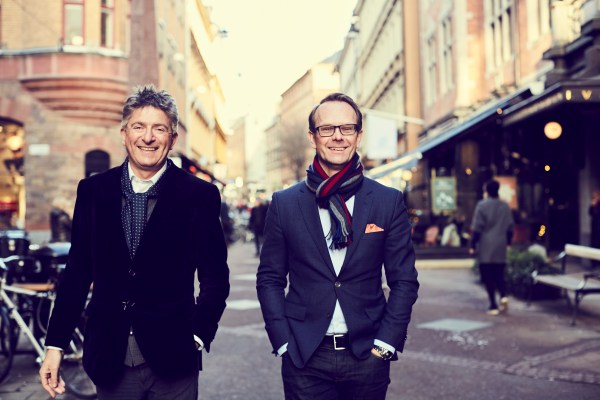
Oxx, a European venture capital firm co-founded by Richard Anton and Mikael Johnsson, this month announced the closing of its debut fund of $133 million to back &Europemost promising SaaS companies& at Series A and beyond.
Launched in 2017 and headquartered in London and Stockholm, Oxx pitches itself as one of only a few European funds focused solely on SaaS, and says it will invest broadly across software applications and infrastructure, highlighting five key themes: &data convergence - refinery,& &future of work,& &financial services infrastructure,& &user empowerment& and &sustainable business.&
However, its standout USP is that the firm says it wants to be a more patient form of capital than investors who have a rigid Silicon Valley SaaS mindset, which, it says, often places growth ahead of building long-lasting businesses.
I caught up with Oxxco-founders to dig deeper into their thinking, both with regards to the firmremit and investment thesis, and to learn more about the paircriticism of the prevailing venture capital model they say often pushes SaaS companies to prioritize &grow at all costs.&
TechCrunch: Oxx is described as a B2B software investor investing in SaaS companies across Europe from Series A and beyond. Can you be more specific regarding the size of check you write and the types of companies, geographies, technologies and business models you are focusing on?
Richard Anton: We will lead funding rounds anywhere in the range $5-20 million in SaaS companies. Some themes we&re especially excited about include data convergence and the refining and usage of data (think applications of machine learning, for example), the future of work, financial services infrastructure, end-user empowerment and sustainable business.
- Details
- Category: Technology Today
Read more: VC firm Oxx says SaaS startups should avoid high-risk growth models
Write comment (99 Comments)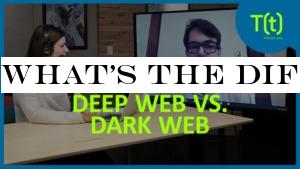
We hear the terms "deep web" and "dark web" thrown around a lot but what do they actually mean? And what's the difference between the two? CSO Online writer J.M. Porup joins Juliet to dispel rumors and discuss what sets the deep web and dark web apart from the rest of the web.
To read this article in full, please click here
- Details
- Category: Technology Today
Read more: What's the difference between the deep web and the dark web
Write comment (93 Comments)The specter of constant surveillance hangs over all of us in ways we don&t even fully understand, but it is also possible to turn the tools of the watchers against them. Forensic Architecture is exhibiting several long-term projects at the Museum of Art and Design in Miami that use the omnipresence of technology as a way to expose crimes and violence by oppressive states.
Over seven years Eyal Weizman and his team have performed dozens of investigations into instances of state-sponsored violence, from drone strikes to police brutality. Often these events are minimized at all levels by the state actors involved, denied or no-commented until the media cycle moves on. But sometimes technology provides ways to prove a crime was committed and occasionally even cause the perpetrator to admit it — hoisted by their own electronic petard.
Sometimes this is actual state-deployed kit, like body cameras or public records, but it also uses private information co-opted by state authorities to track individuals, like digital metadata from messages and location services.
For instance, when Chicago police shot and killed Harith Augustus in 2018, the department released some footage of the incident, saying that it &speaks for itself.& But Forensic Architectureclose inspection of the body cam footage and cross reference with other materials makes it obvious that the police violated numerous rules (including in the operation of the body cams) in their interaction with him, escalating the situation and ultimately killing a man who by all indications — except the official account — was attempting to comply. It also helped additional footage see the light which was either mistakenly or deliberately left out of a FOIA release.
In another situation, a trio of Turkish migrants seeking asylum in Greece were shown, by analysis of their WhatsApp messages, images and location and time stamps, to have entered Greece and been detained by Greek authorities before being &pushed back& by unidentified masked escorts, having been afforded no legal recourse to asylum processes or the like. This is one example of several recently that appear to be private actors working in concert with the state to deprive people of their rights.
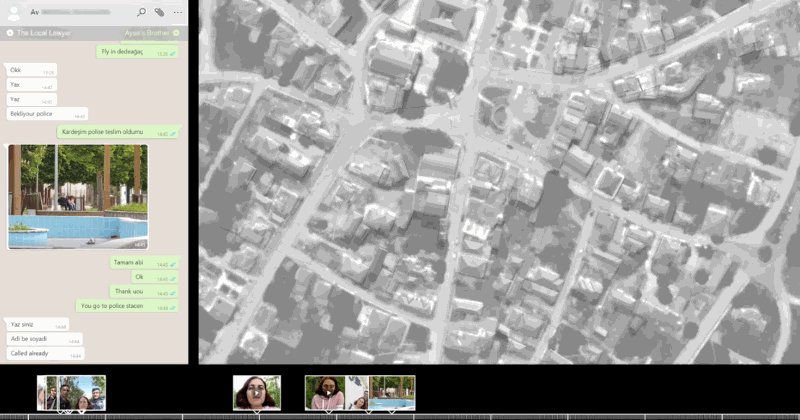
Situated testimony for survivors
I spoke with Weizman before the opening of this exhibition in Miami, where some of the latest investigations are being shown off. (Shortly after our interview he would be denied entry to the U.S. to attend the opening, with a border agent explaining that this denial was algorithmically determined; we&ll come back to this.)
The original motive for creating Forensic Architecture, he explained, was to elicit testimony from those who had experienced state violence.
&We started using this technique when in 2013 we met a drone survivor, a German woman who had survived a drone strike in Pakistan that killed several relatives of hers,& Weizman explained. &She has wanted to deliver testimony in a trial regarding the drone strike, but like many survivors her memory was affected by the trauma she has experienced. The memory of the event was scattered, it had lacunae and repetitions, as you often have with trauma. And her condition is like many who have to speak out in human rights work: The closer you get to the core of the testimony, the description of the event itself, the more it escapes you.&
The approach they took to help this woman, and later many others, jog her own memory, was something called &situated testimony.& Essentially it amounts to exposing the person to media from the experience, allowing them to &situate& themselves in that moment. This is not without its own risks.
&Of course you must have the appropriate trauma professionals present,& Weizman said. &We only bring people who are willing to participate and perform the experience of being again at the scene as it happened. Sometimes details that would not occur to someone to be important come out.&
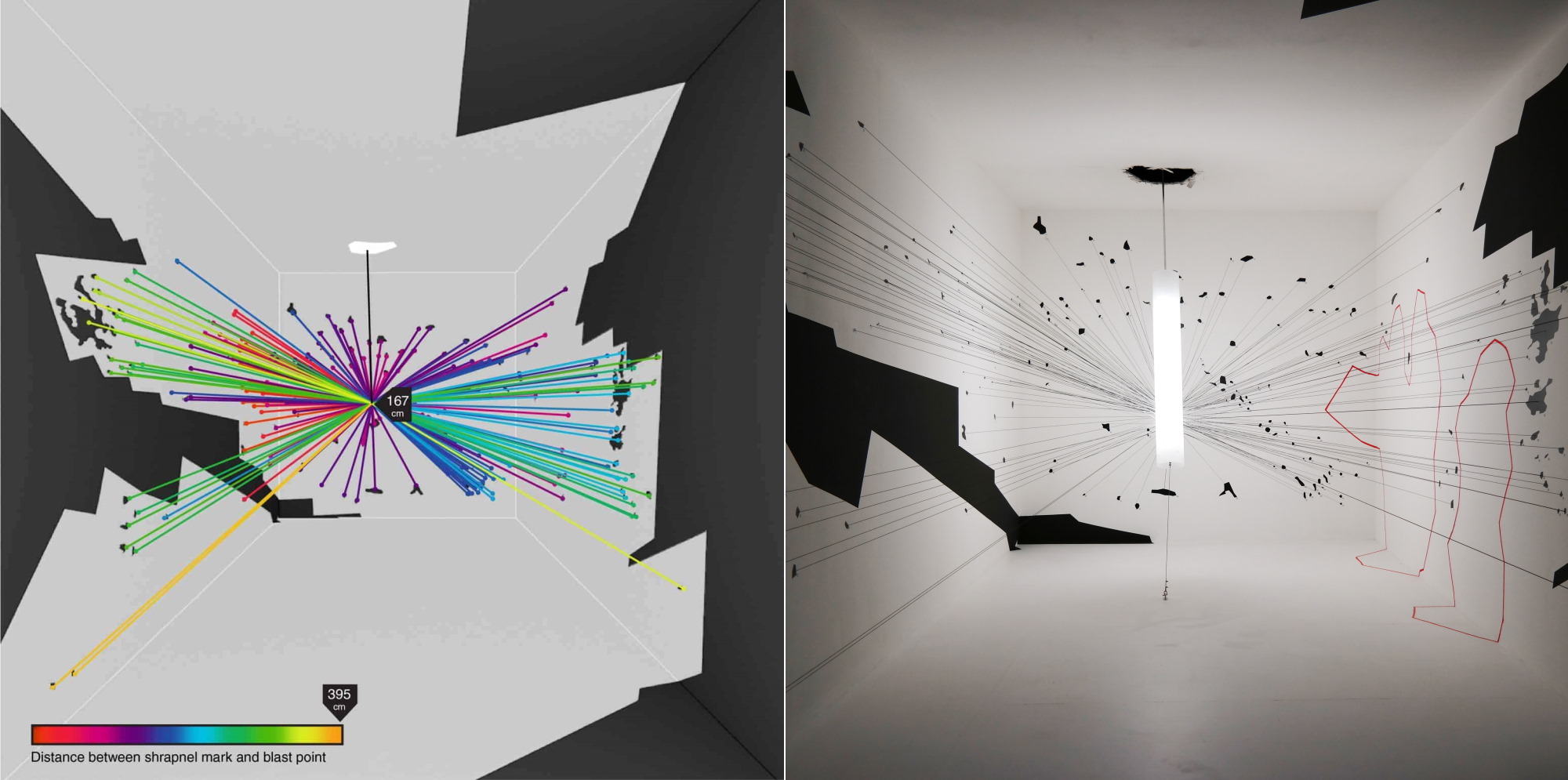
A digital reconstruction of a drone strikeexplosion was recreated physically for another exhibition.
But itsurprising how effective it can be, he explained. One case exposed American involvement hitherto undisclosed.
&We were researching a Cameroon special forces detention center, torture and death in custody occurred, for Amnesty International,& he explained. &We asked detainees to describe to us simply what was outside the window. How many trees, or what else they could see.& Such testimony could help place their exact location and orientation in the building and lead to more evidence, such as cameras across the street facing that room.
&And sitting in a room based on a satellite image of the area, one told us: ‘yes, there were two trees, and one was over by the fence where the American soldiers were jogging.& We said, ‘wait, what, can you repeat that?& They had been interviewed many times and never mentioned American soldiers,& Weizman recalled. &When we heard there were American personnel, we found Facebook posts from service personnel who were there, and were able to force the transfer of prisoners there to another prison.&
Weizman noted that the organization only goes where help is requested, and does not pursue what might be called private injustices, as opposed to public.
&We require an invitation, to be invited into this by communities that invite state violence. We&re not a forensic agency, we&re a counter-forensic agency. We only investigate crimes by state authorities.&
Using virtual reality: &Unparalleled. Italmost tactile.&
In the latest of these investigations, being exhibited for the first time at MOAD, the team used virtual reality for the first time in their situated testimony work. While VR has proven to be somewhat less compelling than most would like on the entertainment front, it turns out to work quite well in this context.
&We worked with an Israeli whistleblower soldier regarding testimony of violence he committed against Palestinians,& Weizman said. &It has been denied by the Israeli prime minister and others, but we have been able to find Palestinian witnesses to that case, and put them in VR so we could cross reference them. We had victim and perpetrator testifying to the same crime in the same space, and their testimonies can be overlaid on each other.&
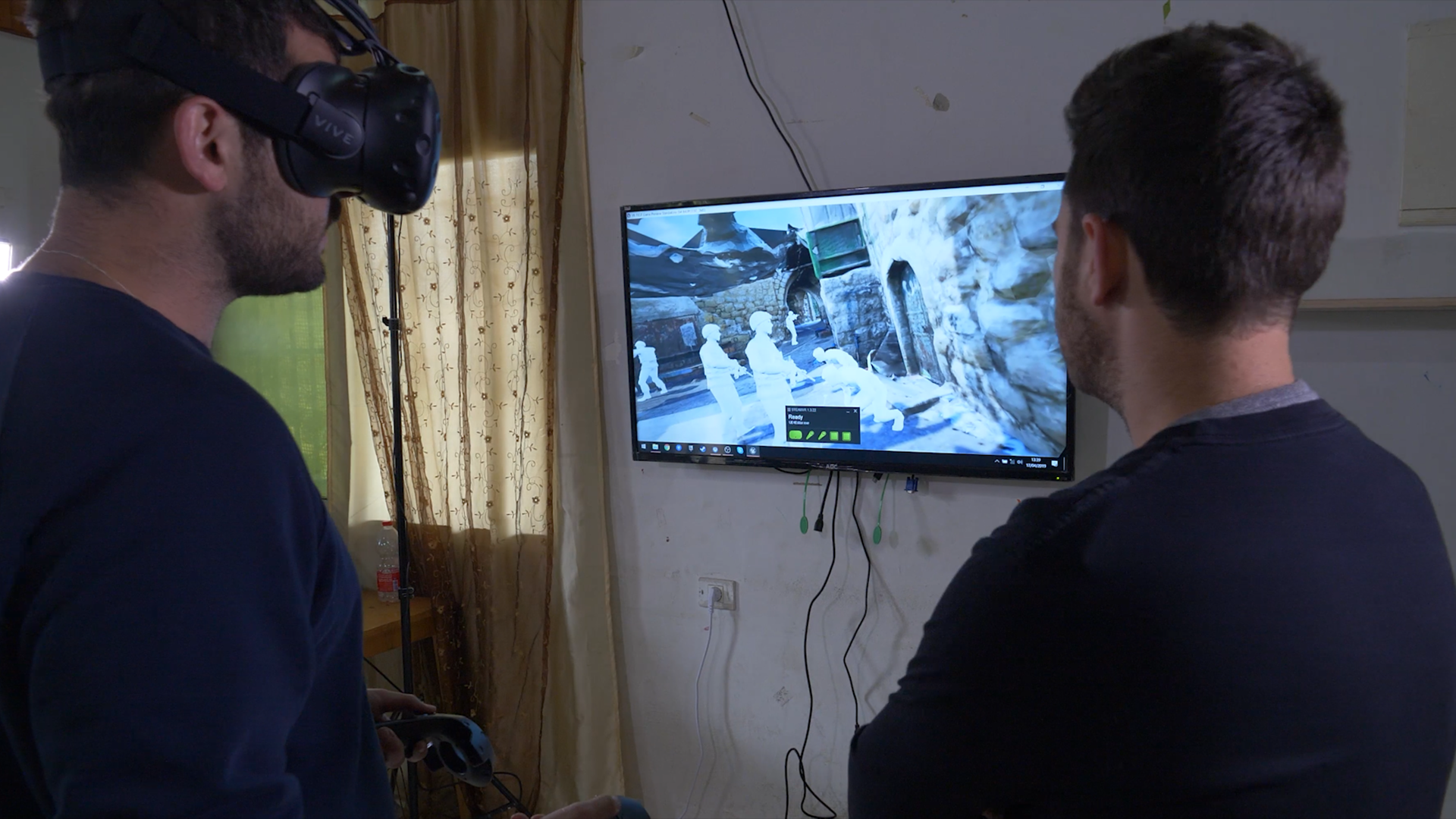
Dean Issacharoff — the soldier accused by Israel of giving false testimony — describes the moment he illegally beat a Palestinian civilian. (Caption and image courtesy of Forensic Architecture)
One thing about VR is that the sense of space is very real; if the environment is built accurately, things like sight-lines and positional audio can be extremely true to life. If someone says they saw the event occur here, but the state says it was here, and a camera this far away saw it at this angle… these incomplete accounts can be added together to form something more factual, and assembled into a virtual environment.
&That project is the first use of VR interviews we have done — itstill in a very experimental stage. But it didn&t involve fatalities, so the level of trauma was a bit more controlled,& Weizman explained. &We have learned that the level and precision we can arrive at in reconstructing an incident is unparalleled. Italmost tactile; you can walk through the space, you can see every object: guns, cars, civilians. And you can populate it until the witness is satisfied that this is what they experienced. I think this is a first, definitely in forensic terms, as far as uses of VR.&
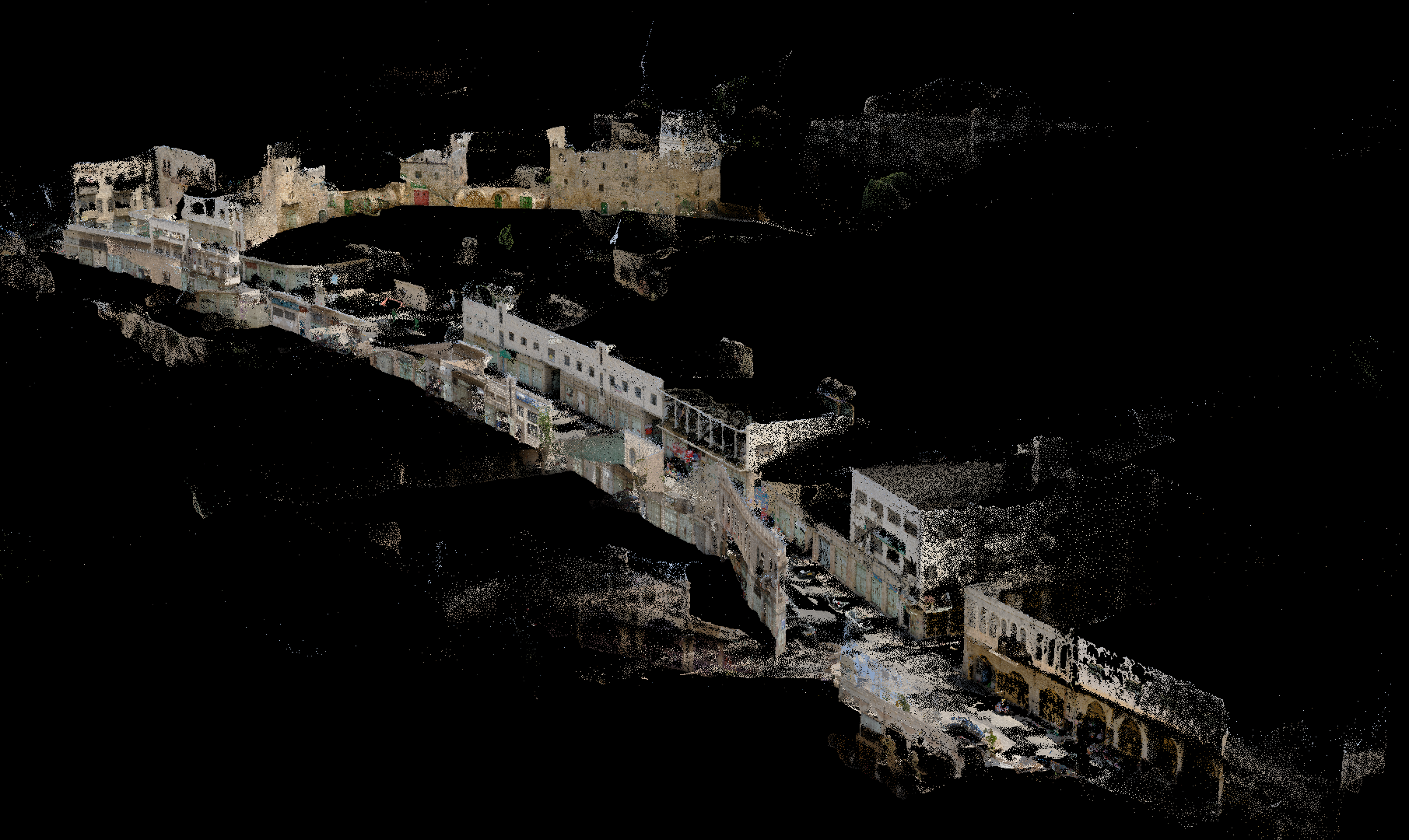
A photogrammetry-based reconstruction of the area of Hebron where the incident took place.
In video of the situated testimony, you can see witnesses describing locations more exactly than they likely or even possibly could have without the virtual reconstruction. &I stood with the men at exactly that point,& says one, gesturing toward an object he recognized, then pointing upwards: &There were soldiers on the roof of this building, where the writing is.&
Of course it is not the digital recreation itself that forces the hand of those involved, but the incontrovertible facts it exposes. No one would ever have known that the U.S. had a presence at that detainment facility, and the country had no reason to say it did. The testimony wouldn&t even have been enough, except that it put the investigators onto a line of inquiry that produced data. And in the case of the Israeli whistleblower, the situated testimony defies official accounts that the organization he represented had lied about the incident.
Avoiding &product placement& and tech incursion
Sophie Landres, MOADcurator of Public Programs and Education, was eager to add that the museum is not hosting this exhibit as a way to highlight how wonderful technology is. Itimportant to put the technology and its uses in context rather than try to dazzle people with its capabilities. You may find yourself playing into someone elseagenda that way.
&For museum audiences, this might be one of their first encounters with VR deployed in this way. The companies that manufacture these technologies know that people will have their first experiences with this tech in a cultural or entertainment contrast, and they&re looking for us to put a friendly face on these technologies that have been created to enable war and surveillance capitalism,& she told me. &But we&re not interested in having our museum be a showcase for product placement without having a serious conversation about it. Ita place where artists embrace new technologies, but also where they can turn it towards existing power structures.&
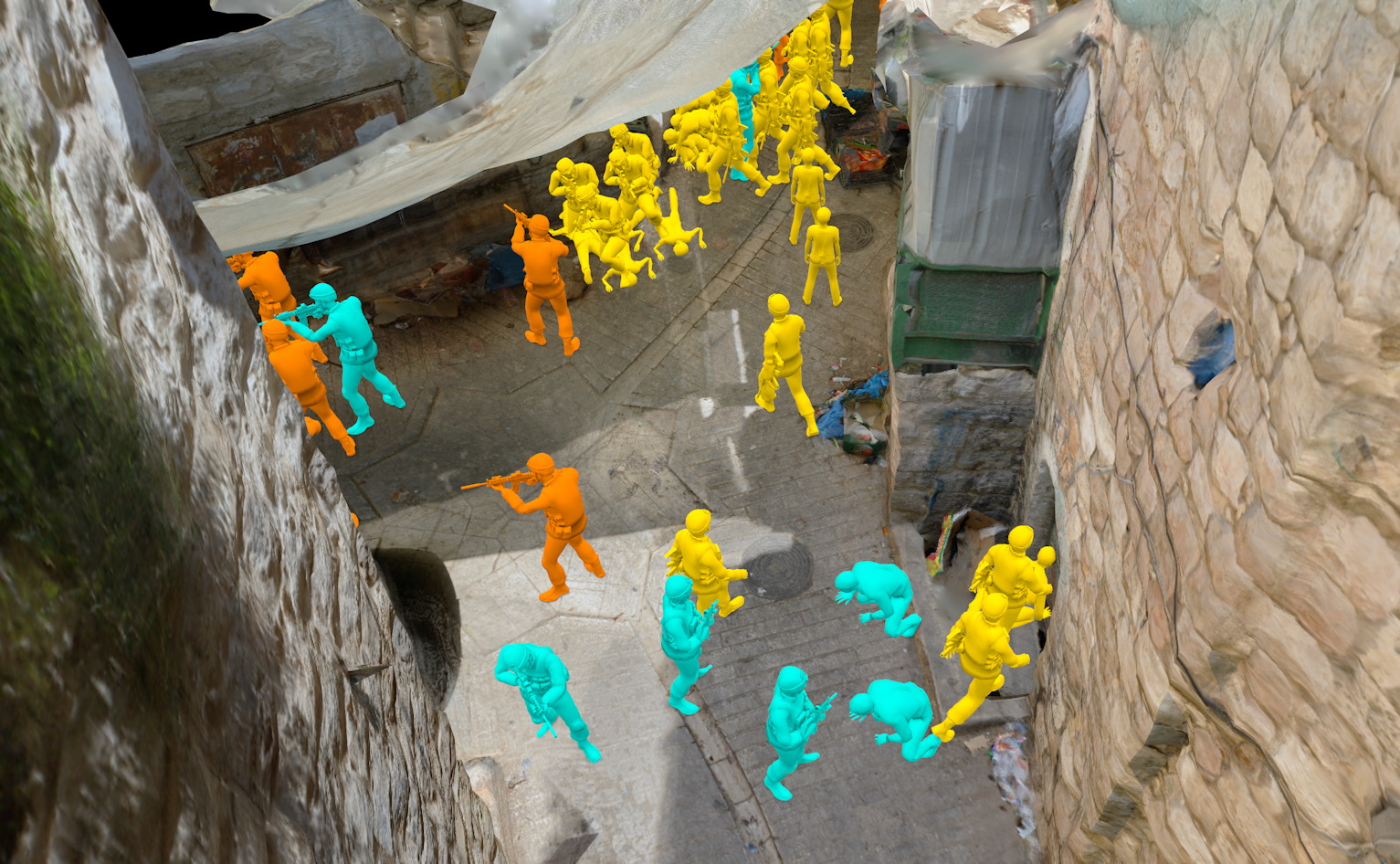
Boots on backs mean this not an advertisement for VR headsets or 3D modeling tools.
She cited a tongue-in-cheek definition of &mixed reality& referring to both digital crossover into the real world and the deliberate obfuscation of the truth at a greater scale.
&On the one hand you have mixing the digital world and the real, and on the other you have the mixed reality of the media environment, where thereno agreement on reality and all these misinformation campaigns. Whatimportant about Forensic Architecture is they&re not just presenting evidence of the facts, but also the process used to arrive at these truth claims, and thatextremely important.&
In openly presenting the means as well as the ends, Weizman and his team avoid succumbing to what he calls the &dark epistemology& of the present post-truth era.
&The arbitrary logic of the border&
As mentioned earlier, Weizman was denied entry to the U.S. for reasons unknown, but possibly related to the network of politically active people with whom he has associated for the sake of his work. Disturbingly, his wife and children were also stopped while entering the states a day before him and separated at the airport for questioning.
In a statement issued publicly afterwards, Weizman dissected the event.
In my interview the officer informed me that my authorization to travel had been revoked because the &algorithm& had identified a security threat. He said he did not know what had triggered the algorithm but suggested that it could be something I was involved in, people I am or was in contact with, places to which I had traveled… I was asked to supply the Embassy with additional information, including fifteen years of travel history, in particular where I had gone and who had paid for it. The officer said that Homeland Securityinvestigators could assess my case more promptly if I supplied the names of anyone in my network whom I believed might have triggered the algorithm. I declined to provide this information.
This much we know: we are being electronically monitored for a set of connections & the network of associations, people, places, calls, and transactions & that make up our lives. Such network analysis poses many problems, some of which are well known. Working in human rights means being in contact with vulnerable communities, activists and experts, and being entrusted with sensitive information. These networks are the lifeline of any investigative work. I am alarmed that relations among our colleagues, stakeholders, and staff are being targeted by the US government as security threats.
This incident exemplifies & albeit in a far less intense manner and at a much less drastic scale & critical aspects of the &arbitrary logic of the border& that our exhibition seeks to expose. The racialized violations of the rights of migrants at the US southern border are of course much more serious and brutal than the procedural difficulties a UK national may experience, and these migrants have very limited avenues for accountability when contesting the violence of the US border.
The works being exhibited, he said, &seek to demonstrate that we can invert the forensic gaze and turn it against the actors — police, militaries, secret services, border agencies — that usually seek to monopolize information. But in employing the counter-forensic gaze one is also exposed to higher-level monitoring by the very state agencies investigated.&
Forensic Architectureinvestigations are ongoing; you can keep up with them at the organizationwebsite. And if you&re in Miami, drop by MOAD to see some of the work firsthand.
- Details
- Category: Technology Today
Fintech startup Revolut is raising a large Series D round of funding. TCV is leading the $500 million round, valuing the company at $5.5 billion. Over the past few years, Revolut has raised $836 million in total.
Some existing investors are also participating in todayfunding round, but Revolut isn&t sharing names. Previous investors include DST Global, Index Ventures, Balderton Capital and many others.
If you&re not familiar with Revolut, the company is building a financial service to replace traditional bank accounts. You can open an account from an app in just a few minutes. You can then receive, send and spend money from the app or using a debit card.
On top of that, Revolut has added a ton of features that it has built in-house or through partnerships. You can insure your phone, get a travel medical insurance package, buy cryptocurrencies, buy shares, donate to charities, save money and more.
Revolut currently has more than 10 million customers, mostly in Europe and the U.K. The company doesn&t share specific numbers when it comes to transaction volume and monthly active customers, but here are some percentage-based metrics:
- The total number of users has grown by 169% in 2019.
- Daily active customers grew by 380% in 2019.
- Revenue grew by 354% in 2018 (yes, 2018).
- Revenue from premium subscription plans (Revolut Premium and Revolut Metal) have grown by 154% in 2019.
With the new influx of cash, the company says that it&ll focus on improving its product for existing users as well as revenue. Itall about making Revolut more useful and stickier going forward.
In particular, you can expect new lending services for both retail customers as well as companies using Revolut for Business. While Revolut provides a ton of services in the U.K., customers in other markets don&t have the same feature set. For instance, Revolut recently launched savings vaults in the U.K. — customers in other markets will be able to open savings sub-accounts in the future, as well.
Other than that, Revolut wants to double down on the core features. The company will improve its two subscription tiers (Premium and Metal) and improve banking operations across Europe —you can expect full bank accounts in Europe in the future.
There are currently 2,000 people working for Revolut. &We&re on a mission to build a global financial platform — a single app where our customers can manage all of their daily finances, and this investment demonstrates investor confidence in our business model. Going forward, our focus is on rolling-out banking operations in Europe, increasing the number of people who use Revolut as their daily account, and striving towards profitability,& Revolut co-founder and CEO Nik Storonsky said in the release.
Revolut is currently live in the U.K., Europe, Singapore and Australia (in beta). While the company has announced plans to expand to a handful of countries, the main focus is on launching in the U.S. and Japan in the coming months.
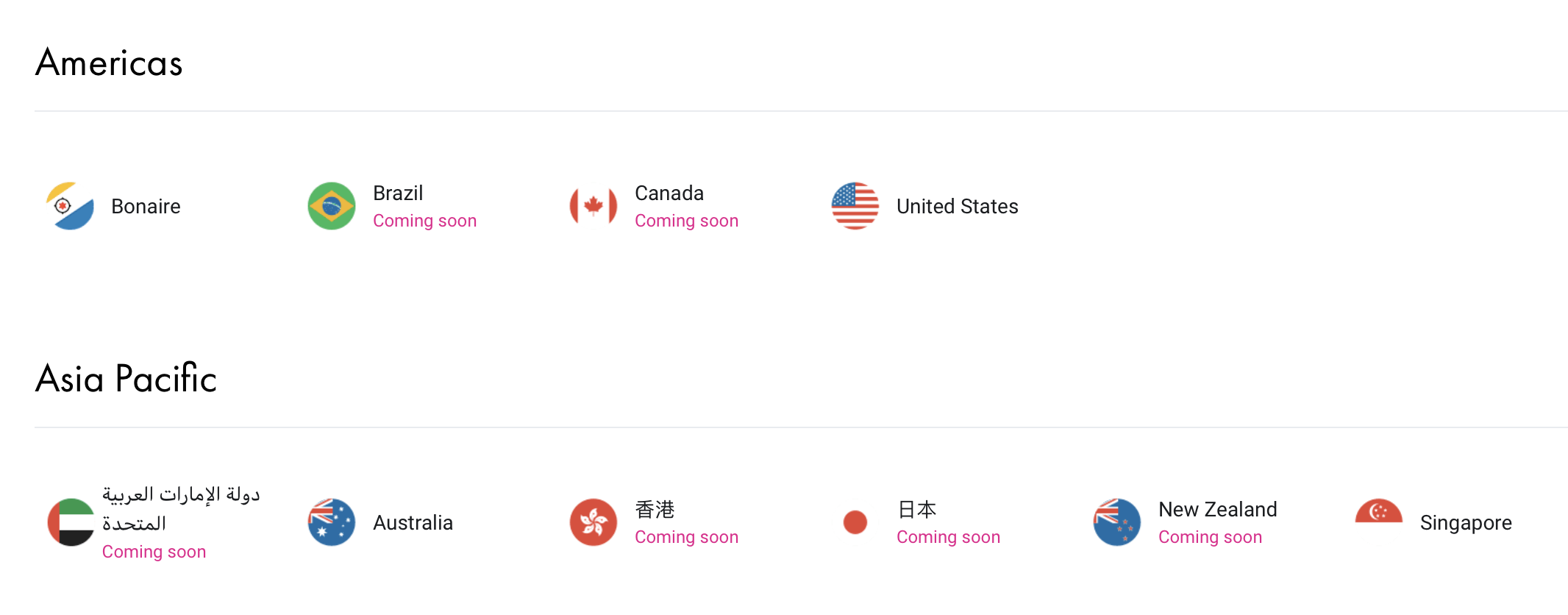
- Details
- Category: Technology Today
Read more: Revolut raises $500 million at a $5.5 billion valuation
Write comment (100 Comments)Boris Renski, the co-founder of Mirantis, one of the earliest and best-funded players in the OpenStack space a few years ago (which then mostly pivoted to Kubernetes and DevOps), has left his role as CMO to focus his efforts on a new startup: FreedomFi. The new company brings together open-source hardware and software to give enterprises a new way to leverage the newly opened 3.5 GHz band for private LTE and — later — 5G IoT deployments.
&There is a very broad opportunity for any enterprise building IoT solutions, which completely changes the dynamic of the whole market,& Renski told me when I asked him why he was leaving Mirantis. &This makes the whole space very interesting and fast-evolving. I felt that my background in open source and my existing understanding of the open-source landscape and the LTE space […] is an extremely compelling opportunity to dive into headfirst.&

Renski told me that a lot of the work the company is doing is still in its early stages, but the company recently hit a milestone when it used its prototype stack to send messages across its private network over a distance of around 2.7 miles.
Mirantis itself worked on bringing Magma, a Facebook-developed open-source tool for powering some of the features needed for building access networks, into production. FreedomFi is also working with the OpenAirInterface consortium, which aims to create an ecosystem for open-source software and hardware development around wireless innovation. Most, if not all, of the technology the company will develop over time will also be open source, as well.
Renski, of course, gets to leverage his existing connections in the enterprise and telco industry with this new venture, but he also told me that he plans to leverage the Mirantis playbook as he builds out the company.
&At Mirantis, our journey was that we started with basically offering end-to-end open-source cloud buildouts to a variety of enterprises back when OpenStack was essentially the only open-source cloud project out there,& he explained. &And we spent a whole bunch of time doing that, engaging with customers, getting customer revenue, learning where the bottlenecks are — and then kind of gradually evolving into more of a leveraged business model with a subscription offering around OpenStack and then MCP and now Kubernetes, Docker, etc. But the key was to be very kind of customer-centric, go get some customer wins first, give customers a services-centric offering that gets them to the result, and then figure out where the leveraged business model opportunities are.&
Currently, enterprises that want to attempt to build their own private LTE networks — and are willing to spend millions on it — have to go to the large telecom providers. Those companies, though, aren&t necessarily interested in working on these relatively small deployments (or at least &small& by the standards of a telco).
Renski and his team started the project about two months ago and for now, it remains self-funded. But the company already has five pilots lined up, including one with a company that produces large-scale events and another with a large real estate owner, and with some of the tech falling in place, Renski seems optimistic that this is a project worth focusing on. There are still some hurdles to overcome and Renski tells me the team is learning new things every day. The hardware, for example, remains hard to source and the software stack remains in flux. &We&re probably at least six months away from having solved all of the technology and business-related problems pertaining to delivering this kind of end-to-end private LTE network,& he said.
- Details
- Category: Technology Today
Read more: Mirantis co-founder launches FreedomFi to bring private LTE networks to enterprises
Write comment (96 Comments)Page 1396 of 1439

 6
6





